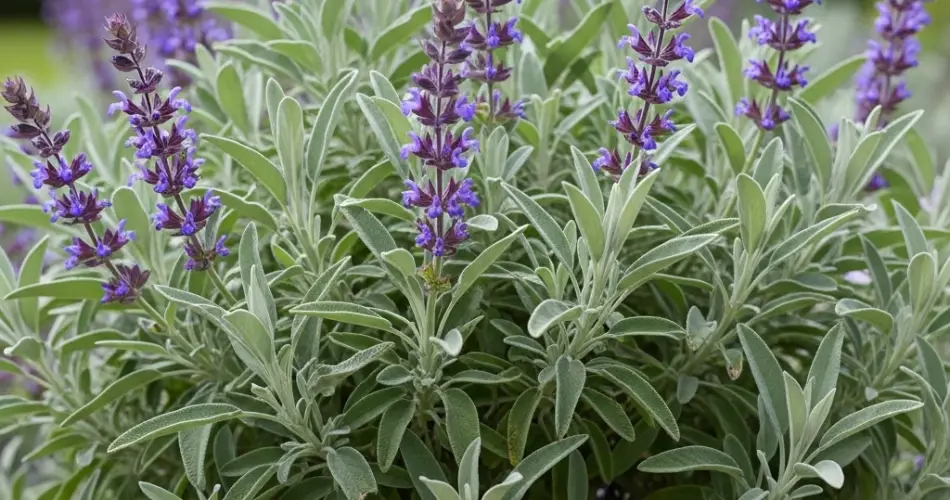Sage is a robust, fragrant herb that brings both culinary flavor and garden beauty. Whether you’re growing it in the ground or in containers, sage can thrive with minimal care—but without regular pruning, it can become woody, leggy, and far less productive. To keep your sage plant lush, compact, and full of flavor, proper pruning is essential.
Learning when and how to prune sage ensures a longer-lasting plant that yields more aromatic leaves. Here’s a complete guide to pruning sage so it remains healthy and productive throughout the growing season and beyond.
Why Pruning Sage Matters
Sage is a semi-woody perennial. Without regular trimming, it can become tall and spindly, with fewer new shoots and lower leaf quality. Pruning helps in several ways:
-
Encourages bushier growth: Cutting back leggy stems stimulates new growth from the base.
-
Improves air circulation: Reduces the risk of disease and fungal issues.
-
Extends the plant’s life: Especially important for perennial sage, which can become woody if left unpruned.
-
Boosts flavor: Newer leaves tend to be more aromatic and tender for cooking.
By pruning correctly, you’ll ensure your sage stays full, healthy, and productive year after year.
When to Prune Sage
Pruning sage is not a one-time task—it’s something you do throughout the plant’s lifecycle:
-
Early Spring: As the plant wakes up from dormancy, prune to remove winter damage and encourage fresh growth.
-
Mid-Season (Late Spring to Early Summer): Light pruning can help shape the plant and promote additional branching.
-
After Flowering: Remove spent blooms to redirect the plant’s energy toward foliage.
-
Late Summer/Early Fall: Perform a more substantial trim to prepare the plant for overwintering, but avoid heavy pruning too late in the season.
Avoid hard pruning in late fall or winter, as it may stress the plant before cold weather sets in.
Tools You’ll Need
-
Sharp pruning shears or scissors
-
Gloves (optional but helpful for handling woody stems)
-
Clean cloth and alcohol to disinfect tools before and after use
Clean cuts reduce the risk of disease and promote faster healing, so always use sharp, sterile tools.
How to Prune Sage: Step-by-Step
Step 1: Inspect the Plant
Before you begin, examine your sage plant. Identify woody stems, leggy growth, or damaged branches. Decide whether you need a light trim or a more substantial cutback.
Step 2: Cut Above New Growth Nodes
Look for a pair of healthy leaf nodes (where leaves meet the stem) and make your cuts about ¼ inch above them. This encourages the plant to branch out at that point.
Step 3: Remove Woody Stems
If parts of the plant have turned woody and no longer produce many leaves, trim them back to just above where new growth is emerging. Avoid cutting too deep into old wood, as it may not regrow.
Step 4: Shape the Plant
Trim around the edges to create a uniform, rounded shape. This helps the plant maintain balance and prevents toppling in containers or windy areas.
Step 5: Deadhead After Flowering
Once sage blooms, the plant may slow down in leaf production. Cut off the flower stalks down to a set of leaves to help it refocus on foliage.
Tips for Keeping Sage Productive
-
Harvest regularly: Frequent harvesting doubles as light pruning. Snip a few stems every week for cooking.
-
Don’t overcut: Never remove more than one-third of the plant at a time. This allows the sage to recover and continue growing.
-
Water after pruning: Give the plant a good drink after pruning to help it bounce back.
-
Mulch in fall: After fall pruning, add a light mulch layer to protect the roots over winter.
Signs Your Sage Needs Pruning
-
Long, leggy stems with sparse leaves
-
Center of the plant becoming bare
-
Woodiness developing at the base
-
Reduced leaf production or quality
-
Sprawling growth that overshadows nearby plants
If you notice any of these signs, it’s time to reach for the shears and give your sage some attention.
What to Do With the Cuttings
Freshly pruned sage stems are incredibly useful. Use the leaves immediately in the kitchen or dry them for later use. To dry sage, tie small bundles of stems and hang them upside down in a warm, well-ventilated place out of direct sunlight. Once dry, strip the leaves and store them in airtight jars.
You can also propagate sage from healthy cuttings. Place trimmed green stems (not woody ones) in water or a moist growing medium until roots form, then transplant into pots or the garden.
Conclusion
Pruning sage is a simple but powerful way to keep this hardy herb productive, flavorful, and attractive. With the right timing and technique, you’ll prevent your sage from becoming woody and encourage it to stay full and leafy. Regular pruning, combined with thoughtful harvesting, ensures that your sage plant thrives for seasons to come—ready to flavor your dishes and fill your garden with fragrance.



